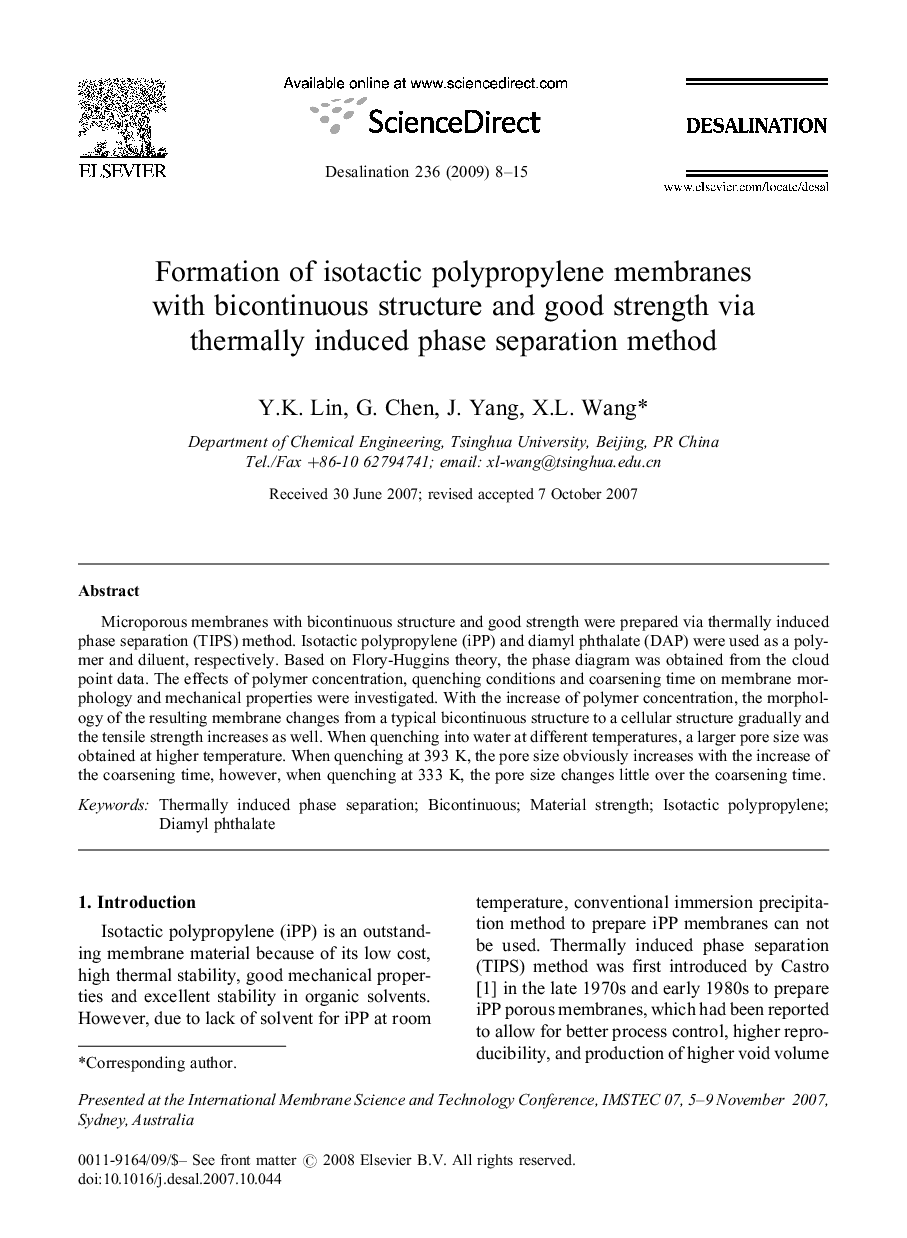| Article ID | Journal | Published Year | Pages | File Type |
|---|---|---|---|---|
| 627015 | Desalination | 2009 | 8 Pages |
Abstract
Microporous membranes with bicontinuous structure and good strength were prepared via thermally induced phase separation (TIPS) method. Isotactic polypropylene (iPP) and diamyl phthalate (DAP) were used as a polymer and diluent, respectively. Based on Flory-Huggins theory, the phase diagram was obtained from the cloud point data. The effects of polymer concentration, quenching conditions and coarsening time on membrane morphology and mechanical properties were investigated. With the increase of polymer concentration, the morphology of the resulting membrane changes from a typical bicontinuous structure to a cellular structure gradually and the tensile strength increases as well. When quenching into water at different temperatures, a larger pore size was obtained at higher temperature. When quenching at 393 K, the pore size obviously increases with the increase of the coarsening time, however, when quenching at 333 K, the pore size changes little over the coarsening time.
Related Topics
Physical Sciences and Engineering
Chemical Engineering
Filtration and Separation
Authors
Y.K. Lin, G. Chen, J. Yang, X.L. Wang,
